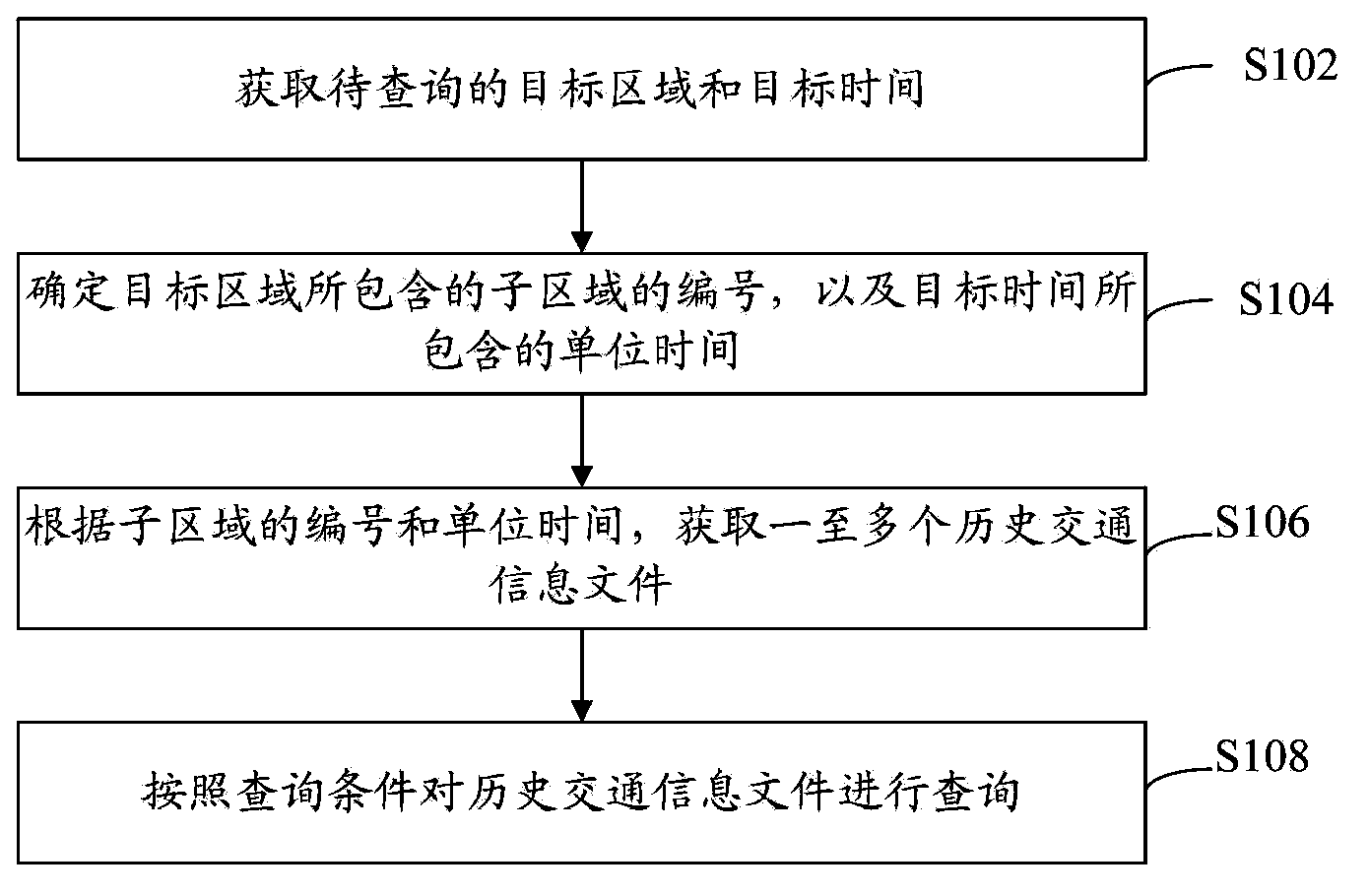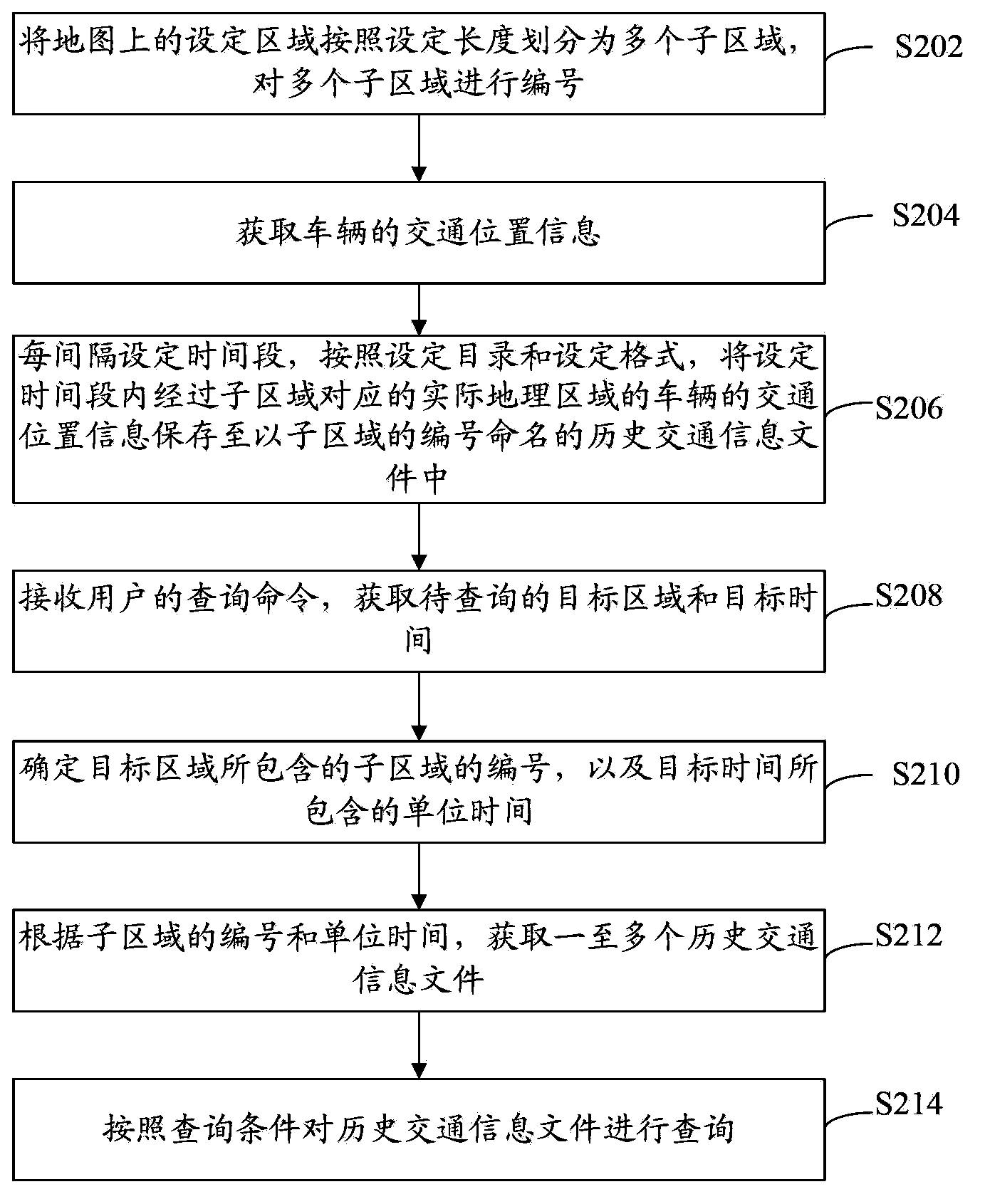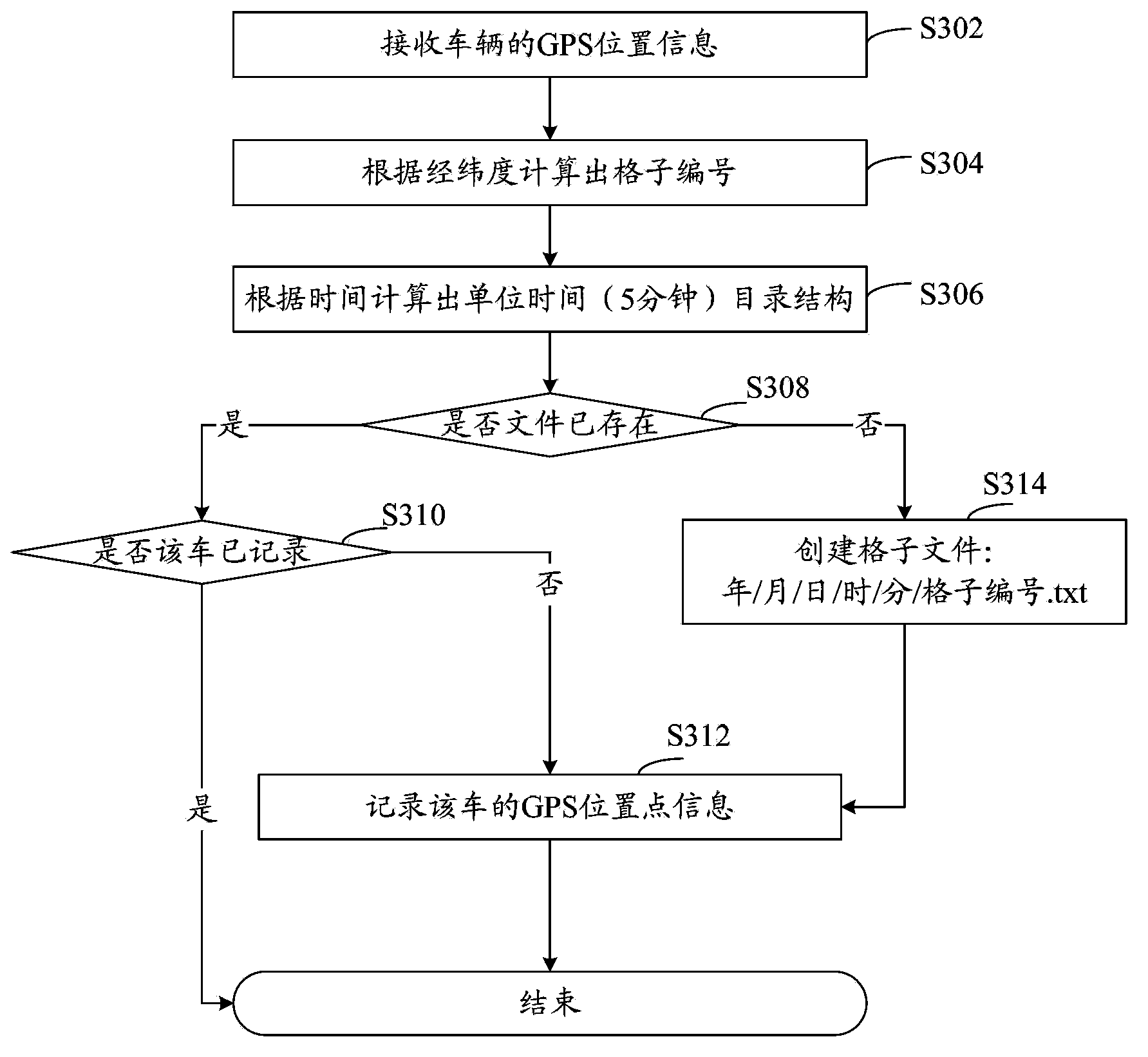Traffic information query method and device
A traffic information and query method technology, applied in the field of traffic information query methods and devices, can solve the problems of tedious and complicated backup and maintenance of historical data, large resource occupation of relational database, performance degradation of relational database, etc., so as to achieve simple and convenient backup and maintenance, Accurate and fast search, improve the effect of user experience
- Summary
- Abstract
- Description
- Claims
- Application Information
AI Technical Summary
Problems solved by technology
Method used
Image
Examples
Embodiment 1
[0028] refer to figure 1 , shows a flow chart of steps of a traffic information query method according to Embodiment 1 of the present invention.
[0029] The traffic information inquiry method of the present embodiment comprises the following steps:
[0030] Step S102: Obtain the target area and target time to be queried.
[0031] For example, the user enters the target time (such as 8:00-9:00 of the day) and the target area to be queried through the traffic information query interface (such as the WEBGIS interface). The query can be entered by dragging the mouse on the corresponding interface to delineate the area, and of course, other appropriate methods can also be used, which is not limited in the present invention.
[0032] Step S104: Determine the number of the sub-area included in the target area, and the unit time included in the target time.
[0033] The area on the map is divided into multiple sub-areas in advance according to certain rules, and the target area ma...
Embodiment 2
[0041] refer to figure 2 , shows a flow chart of steps of a traffic information query method according to Embodiment 2 of the present invention.
[0042] The traffic information inquiry method of the present embodiment comprises the following steps:
[0043] Step S202: Divide the set area on the map into multiple sub-areas according to the set length, and number the multiple sub-areas.
[0044] There is a one-to-one correspondence between the subregions on the map and the actual geographic subregions. For example, a set region such as a region, a city, or a country can be divided into multiple subregions according to the actual geographic length, and then the subregions can be divided according to the scale. The divisions are mapped onto the map. Of course, it can also be divided on the map to correspond to the actual geographical area. Wherein, the set length can be appropriately selected by those skilled in the art according to the actual situation, and the present inven...
Embodiment 3
[0060] In this embodiment, it is assumed that the whole earth is straightened and expanded into a plane rectangle along the prime meridian, and this rectangular plane is divided into several small square grids (ie sub-regions) according to a fixed length (such as 20,000 meters), consisting of A grid (such as a Go board), and each grid is uniquely numbered by the serial number of the latitude and longitude coordinates. In this way, the grid where the point is located can be calculated according to any latitude and longitude point. Map this grid to the map according to the scale. When the query passes through the location points in a certain area, first calculate all the grids involved in the area, and then filter the objects in each grid.
[0061] In the specific implementation, it is divided into two parts: data structure and query algorithm, as follows: image 3 and Figure 4 shown. For the convenience of understanding, this embodiment is described by taking the applicatio...
PUM
 Login to View More
Login to View More Abstract
Description
Claims
Application Information
 Login to View More
Login to View More - R&D
- Intellectual Property
- Life Sciences
- Materials
- Tech Scout
- Unparalleled Data Quality
- Higher Quality Content
- 60% Fewer Hallucinations
Browse by: Latest US Patents, China's latest patents, Technical Efficacy Thesaurus, Application Domain, Technology Topic, Popular Technical Reports.
© 2025 PatSnap. All rights reserved.Legal|Privacy policy|Modern Slavery Act Transparency Statement|Sitemap|About US| Contact US: help@patsnap.com



